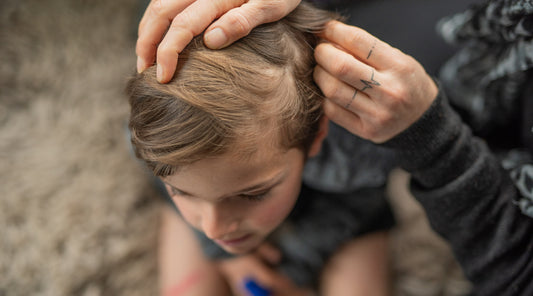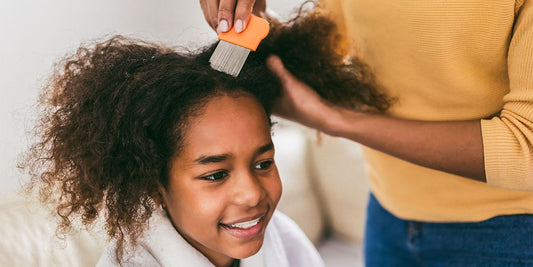Nit - the egg or young form of a louse or other parasitic insect, esp. of human head lice or body lice (The Concise Oxford Dictionary)
In the United States alone, it is estimated that over $1 billion is spent annually on head lice treatments, including prescription medications, over-the-counter remedies, and home remedies. Despite this enormous amount of money being spent, head lice remain a pervasive problem, affecting millions of people every year.
The truth is, head lice infestations can be challenging to treat, and there is no one-size-fits-all solution. Chemical treatments can be effective, but they can also be harsh and potentially dangerous, especially for children with sensitive skin or respiratory problems. Additionally, overuse of chemical treatments can lead to the development of pesticide-resistant lice, making them even harder to eliminate.
Fortunately, there are alternative treatments that are safer and more effective than chemical options. These include manual removal using a lice comb, which is time-consuming but highly effective, as well as using natural remedies like tea tree oil, coconut oil, or vinegar. It's essential to remember that preventing head lice is always better than treating them, so encourage your children to avoid sharing hairbrushes, hats, and other personal items with their friends, and to keep their hair tied back when in close contact with others.
In conclusion, head lice infestations are a common problem, but they can be treated and prevented with the right knowledge and tools. It's essential to take the issue seriously and to avoid misinformation that can be harmful and exacerbate the problem. If you or your child is struggling with head lice, seek the advice of a healthcare professional or a lice removal specialist who can help guide you toward the best treatment options for your specific situation.
About Head Lice
- Head lice are usually small 6-legged insects, which can vary in colour from grey to brown. Nits are tiny oval shape light colour specs, which are glued to individual strands of hair
- Nits are usually close to the scalp where it is warm but they can be found anywhere on hair
- To check if an egg is dead, squeeze it between the two thumb finger nails. If you can hear a click, it means that the nit was alive (but not any more!) and the person has to be treated.
- Head lice feed on blood sucked from the human scalp
- Head lice are not necessarily tiny creatures - some of them are big enough to be easily spotted crawling on hair. They used to be approximately 1mm long but now some reach 4mm. This seems to be blamed on the overuse of various chemical treatments and the ability of head lice to evolve and “adapt” to them
- Lice can live up to 4 weeks. You need a male and a female to mate to lay eggs
- An adult louse can lay up to 10 eggs a day
- It takes about 7 days for an egg to hatch
- There are approx. 200 species of human lice and some are getting bigger and tougher due to the overload of chemicals in various treatments. They apparently do not cross-breed
- Lice can live on other parts of the body such as pubic area or arm pits or even eyebrows
- If you have head lice it is very likely that your scalp will itch. This is due to (1) the irritation caused by the substance injected into the skin by lice when they suck blood and (2) by the movement of insects crawling in hair
- Some people can itch for weeks even though they are not infested any more
- Head lice can survive outside a human body for up to 48 hours and no prolonged contact is necessary to get infested
- You can catch head lice through direct head to head contact or contact with places or objects, which are infested (hats, hair brushes, soft toys, woolly clothing, bedding). They can't jump or fly but they move very fast
- You cannot catch head lice from animals as they do not get them. They get fleas
- There is no substance known to humans which will give 100% protection against head lice
- We despair when media or even some doctors and pharmacists are trying to “play down” the head lice epidemic by claiming that head lice are harmless, or that we should not use the word infestation (why not – that’s exactly what it is!) but infection instead, or that it is not a medical problem (??). These nonsensical statements only make things worse by misinforming people of the seriousness of parasitic infestation. Head lice are parasite – it’s a fact! Any prolonged parasitic infestation is a medical condition and can lead to secondary health problems – physical or psychological (we have witnessed that on many occasions – and some stories parents tell us are quite heart breaking). And…by the way…any infection is a medical condition!
- Those who ask why so much misinformation, even from the medical professionals, the answer is simple – they don’t really know how to treat this problem any more. The chemical treatments (with or without pesticides) are getting stronger and stronger and yet they are not reducing the amount of children suffering from this very unpleasant condition. How do we know that? Because the amount of money people spend on such treatments is growing



